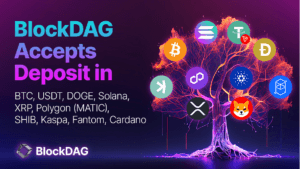How to Mine Bitcoin: An Introduction to Generating Digital Gold
Mining Bitcoin is a crucial process that not only involves generating new Bitcoin but also securing and verifying transactions on the blockchain. This guide provides insights into how you can start mining Bitcoin.

Bitcoin mining is an integral part of the Bitcoin network. It involves the process of adding transaction records to Bitcoin’s public ledger of past transactions, known as the blockchain. This ledger of past transactions is critical as it allows the Bitcoin network to secure and verify all transactions, preventing double-spending and ensuring the network remains decentralized. For those interested in starting to mine Bitcoin, understanding the technical requirements and potential rewards is essential.
First and foremost, Bitcoin mining requires powerful computer hardware. Initially, mining was possible with regular PCs, and later with more powerful graphics processing units (GPUs). However, as the Bitcoin network grew, the difficulty of mining increased substantially. Today, the most effective way to mine Bitcoin is using Application-Specific Integrated Circuits (ASICs). These devices are specifically designed for mining Bitcoin, offering significant processing power and better energy efficiency compared to general-purpose hardware.
To begin mining, you would need to select and purchase the right ASIC miner. The cost of ASIC miners can vary greatly, and the choice depends on factors such as the hash rate (mining power), energy consumption, and your initial budget for investment. High hash rate miners are more expensive but are more likely to solve mathematical problems faster and earn Bitcoin rewards.
Once you have the hardware, the next step is to choose a Bitcoin mining software. The software connects your hardware to the blockchain and the mining pool if you choose to join one. Mining pools are groups of miners who combine their computational resources to increase their chances of mining a block and earning rewards. While joining a mining pool can mean more consistent rewards, it also means that the rewards must be shared among all pool members.
The electricity cost is another crucial consideration. Bitcoin mining consumes a substantial amount of electricity, and thus it can be quite costly. Miners must evaluate their potential earnings against their expected electricity costs to determine if mining can be profitable. It’s essential to operate in a region where electricity costs are relatively low or use renewable energy sources to maintain profitability.
In addition to setting up the hardware and software, understanding the blockchain technology and staying updated with Bitcoin regulations is crucial. Regulations can affect how Bitcoin is mined, particularly concerning energy use, and can vary widely depending on geographic location.
Lastly, the profitability of Bitcoin mining is influenced by the price of Bitcoin, the overall network mining power, and the network difficulty. Network difficulty adjusts every 2016 blocks, or approximately every two weeks, to ensure that blocks are mined approximately every 10 minutes. The higher the network difficulty, the more computational power is required to mine new blocks.
In conclusion, learning how to mine Bitcoin requires an understanding of both the technical aspects and the economic factors involved. While mining Bitcoin can be profitable, it requires initial capital for equipment, ongoing costs for electricity, and a solid understanding of both the technology and current regulations. For those who are technically inclined and willing to invest the time and resources, Bitcoin mining can still be a rewarding endeavor.









